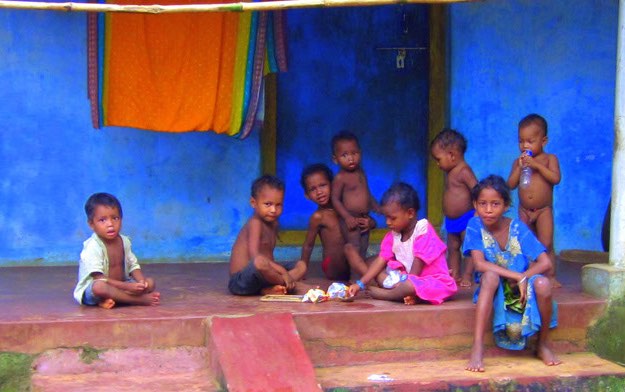The national elections in India may well be over, but the persistent issue of malnutrition still holds the nation in its tight grip. And yet, among the myriad of topics debated, including caste, religion, employment, farmer upliftment, and even social transfers, none of the political parties raised this critical issue. The twin problems of malnutrition and nutrition insecurity are particularly severe in rural India.
According to the latest estimates available from the Indian government’s 2015-16 National Health and Family Survey, nearly 27% of women and 23% of men in rural India are malnourished. Economic growth and development cease to be inclusive if vast swathes of India’s young remain malnourished: 38% of children under five years of age are stunted (low height-for-age) and 36% underweight (low weight-for-age).
“Hidden hunger,” or micronutrient deficiency, that inhibits proper growth and development of the human mind and body, affects a large section of the Indian population, as it does in many developing countries. It has no visible signs but can seriously impair the cognitive abilities of individuals, cause fatigue, reduce immunity, and result in diminished physical capabilities.
Indian diets typically involve copious consumption of staples such as rice and wheat, with limited dietary diversification toward micronutrient-rich foods like fruits, vegetables, and animal products. Introduction of biofortified staples, which are bred to have higher micronutrient contents, into the food system can help improve diets considerably. In fact, biofortification can be a key food-based approach to tackle malnourishment and micronutrient deficiency, especially among the poor who cannot afford high-value foods.
In an ongoing IFPRI study, we explore the scope for introducing biofortified rice and wheat through the public distribution system (PDS)—a state-funded program targeting provision of staples and other essential commodities at discounted prices to the poor—in the eastern Indian states of Bihar and Odisha.
Both states have among the highest incidences of malnutrition and anaemia (iron deficiency) in the country: Incidence of anaemia among children aged 6-59 months and women aged 15-49 years is over 60% in Bihar and close to 50% in Odisha. In rural Bihar, over 70% of all iron and zinc intake comes from cereals whereas in rural Odisha, a third is contributed by cereals.
PDS accounts for a significant share—between 20% and 40%—of the iron and zinc consumed through cereals (mainly rice and wheat) in rural Bihar and Odisha. If the amount of ordinary rice consumed from PDS in these states is replaced by biofortified varieties, zinc intake from rice could increase by over 60%. Similarly, replacement of PDS wheat with a biofortified variety could increase iron and zinc intake from wheat by over 30%. Replacing staples provisioned through the PDS with biofortified varieties could result in substantial gains in ensuring nutritional security for India’s poorest and most vulnerable.
Bihar and Odisha undertook intensive reforms in the PDS to address some of its most obstinate problems, simplifying entitlements, expanding coverage, enhancing transparency, and plugging leakages, soon after India passed the mammoth National Food Security Act in 2013.
Almost a third of all wheat and rice consumed by the poor in these states now comes from the PDS, signaling its wider reach, and highlighting the critical role it can play in any policy initiative to improve nutritional outcomes among the poorest. However, simply introducing biofortified staples through the PDS without first setting up the stage in terms of a robust physical and institutional infrastructure for its production, procurement, and distribution might prove to be a myopic policy move.
To encourage wider uptake of these varieties for cultivation, farmers can be incentivized through a price differentiation procurement mechanism. Sophisticated systems for sampling, testing, grading, and marking will be essential to maintain traceability of produce.
India needs to urgently streamline its efforts toward institutionalizing production, procurement, and distribution of biofortified staples through the existing PDS network. Their introduction into the food system will be a major stride for the nutritional security push in India. Later, India could also explore similar possibilities for biofortified pulses and oilseeds.
Smriti Verma is a Research Analyst and Anjani Kumar is a Senior Research Fellow with IFPRI’s South Asia Region (SAR) in New Delhi. This post first appeared on Thomson-Reuters Foundation News. Opinions are the authors’.







